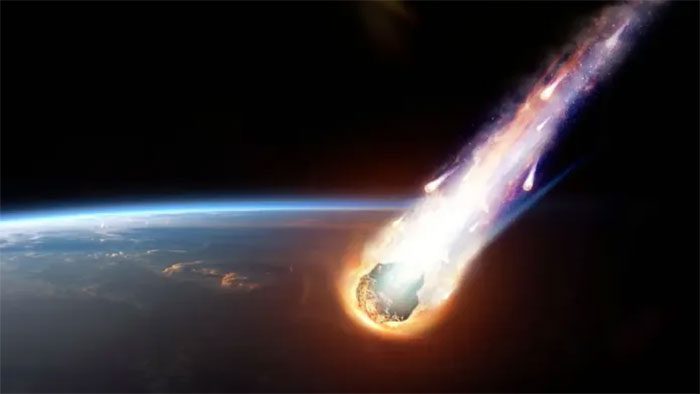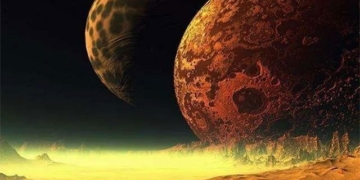A 49-million-ton asteroid is likely to collide with Earth this October. The impact could be equivalent to an explosion caused by 2.7 billion tons of TNT.
2007 FT3 is the asteroid that astronomers first discovered in March 2007. The National Aeronautics and Space Administration (NASA) estimates that this asteroid has a diameter of 340 meters and a mass of 49 million tons.
However, 2007 FT3 disappeared from astronomers’ observations just days after its discovery, which is why scientists have dubbed 2007 FT3 as an “lost asteroid.”
Although the orbit of asteroid 2007 FT3 has not yet been clearly determined, NASA scientists have placed it on the “Sentry Risk Table,” a monitoring system for objects and bodies in space that could impact Earth within the next 100 years.

Estimates suggest asteroid 2007 FT3 has 89 potential impacts on Earth. (Illustrative image).
The NASA Near-Earth Object Research Center estimates that asteroid 2007 FT3 has 89 potential impacts on Earth. One of these impacts could occur on October 5, 2024, when the asteroid has a 0.0000087% chance (equivalent to a 1 in 11.5 million chance) of striking Earth.
If asteroid 2007 FT3 does not collide with Earth on October 5, 2024, it may return and impact Earth on March 3, 2030, with an impact probability of 0.0000096% (equivalent to a 1 in 10 million chance).
If this asteroid were to crash into Earth, at the time of atmospheric entry, it would move at a speed of 20.37 km/s or over 73 km/h. The impact force could be equivalent to an explosion caused by 2.7 billion tons of TNT.
Scientists state that if asteroid 2007 FT3 were to impact Earth, it would cause severe regional damage but would not pose a global threat.
NASA’s forecasts may cause some alarm, but NASA scientists reassure that the likelihood of asteroid 2007 FT3 colliding with Earth is very low and almost negligible.
Previously, NASA had predicted that asteroid 2007 FT3 might collide with Earth in 2019, but everything passed without incident.
Currently, NASA and its partners are utilizing observatories to monitor the orbits of objects in the Solar System, paying special attention to near-Earth objects with a diameter greater than 140 meters, as these are capable of causing significant damage upon impact with Earth.
So far, astronomers have been able to predict almost all such objects and report that in the next 100 years, no large asteroids or meteoroids are expected to collide with Earth.
“There is no asteroid threat to Earth in the coming century. NASA and its partners are actively observing the sky to find, track, and classify asteroids and near-Earth objects to provide early warnings,” a NASA spokesperson stated.
In the event that large objects heading toward Earth are identified, scientists will devise plans to divert their trajectories to mitigate risks if they were to impact Earth.
If asteroid 2007 FT3 is observed again in the future, astronomers may gain a clearer understanding of its trajectory, which could lead to decisions about whether to remove this asteroid from the list of potential impact threats to Earth.


















































